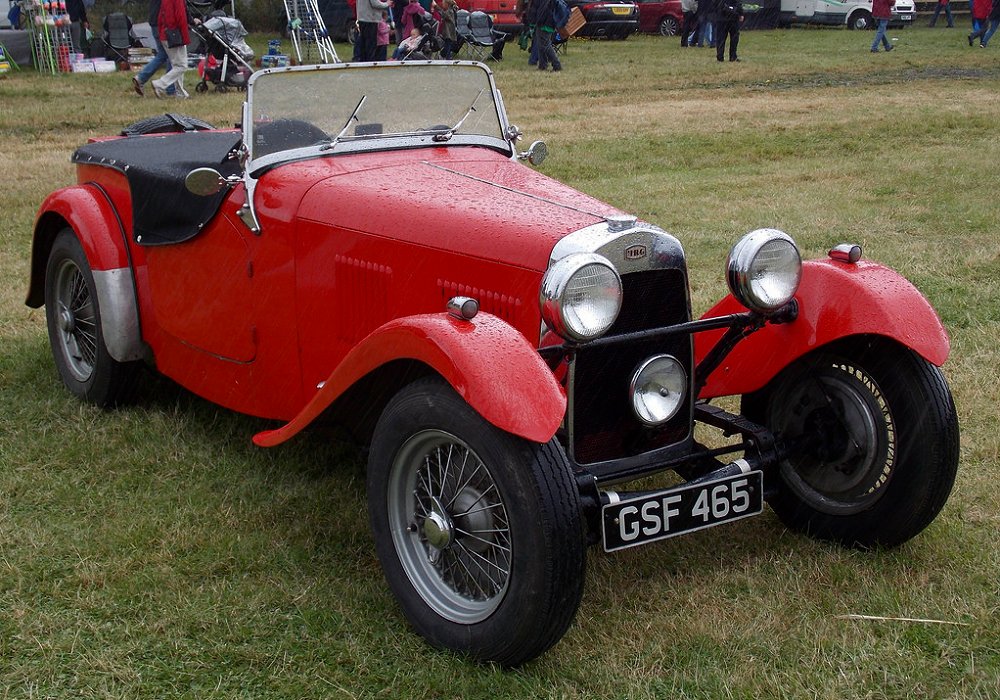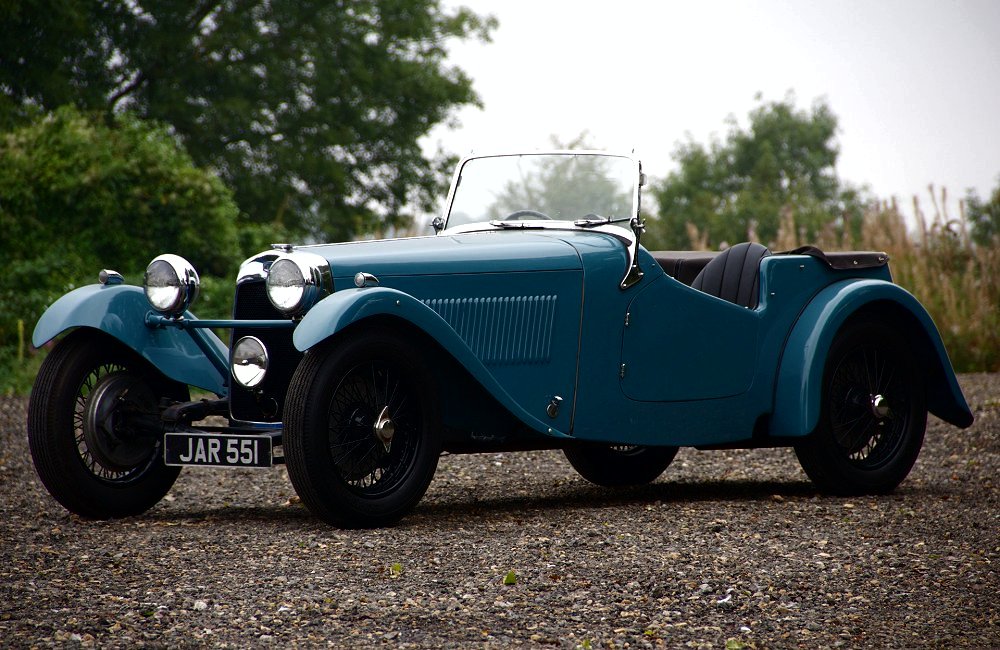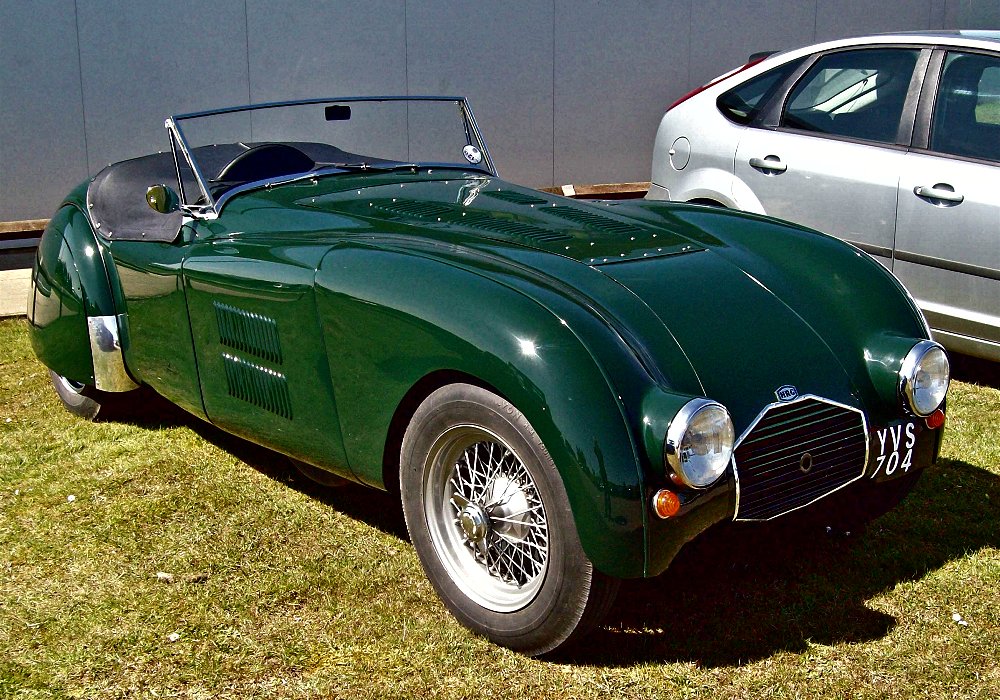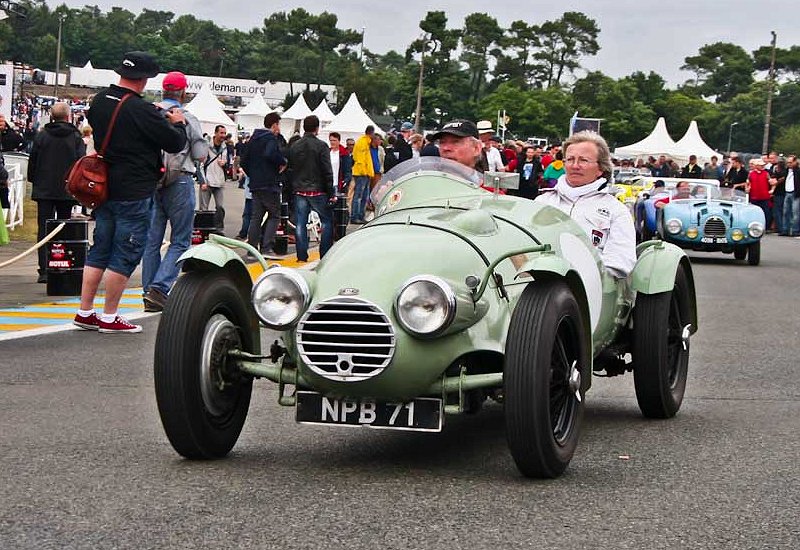Introduction to HRG
HRG, short for Halford, Robins, and Godfrey, was a small British sports car manufacturer active between 1935 and 1956. Though relatively obscure compared to giants like MG or Jaguar, HRG earned a cult following for producing lightweight, performance-oriented sports cars with excellent handling and reliability. Built with a “no frills” philosophy, HRG cars combined pre-war mechanical robustness with real-world motorsport capabilities, making them darlings of privateer racers and enthusiasts alike.
Founding of HRG
The Three Founders
HRG Engineering Company Ltd. was founded in 1935 by three key individuals: Major Edward Halford, Guy Robins, and Henry Ronald Godfrey. Godfrey had previously co-founded GN and Frazer Nash, both known for their sporting machines, and his experience heavily influenced HRG’s design ethos.
Location and Early Ambitions
The company was based in Tolworth, Surrey. Its founders wanted to offer a lightweight, nimble sports car with dependable mechanicals, ideally suited for club-level racing and long-distance touring. They targeted a niche market of driving enthusiasts uninterested in heavy luxury and focused purely on driver engagement.
Design Philosophy and Production Approach
Engineering Simplicity
HRG cars were known for their mechanical simplicity, light weight, and agility. Built with readily available components and solid engineering, they often borrowed parts from other manufacturers like Singer and Meadows. The use of proven engines and gearboxes helped keep prices down while ensuring reliability.
Hand-Built Craftsmanship
Every HRG car was hand-assembled in limited numbers. Only around 241 cars were built throughout the company’s history, contributing to their rarity and collector interest today. The cars used traditional ladder-frame chassis and open two-seater body styles, evoking a pre-war feel even into the post-war years.
Important Models
HRG 1100 (1936–1939)
The first HRG model used a 1,107 cc four-cylinder engine from Singer, delivering modest power but excellent weight distribution. It was designed as a lightweight sports roadster with superb handling, ideal for amateur motorsport.
HRG 1500 (1938–1956)
This became the company’s most successful and best-known model. The 1,496 cc overhead-cam engine, also from Singer, provided a good balance of performance and economy. The 1500 was widely used in trials, rallies, and circuit racing, earning HRG a serious reputation among competitors.
HRG Aerodynamic (1954)
This one-off car was built in collaboration with the Bristol Aeroplane Company and featured sleek, enclosed bodywork and a Bristol engine. It competed at Le Mans in 1954 and remains the only HRG to appear at the event. The design marked a departure from HRG’s traditional styling but showcased its adaptability.
Competition Success
Racing Heritage
HRG cars frequently competed in hill climbs, trials, and endurance races. Though never a major works team, HRG cars often outperformed larger, better-funded competitors thanks to their lightness and driver-friendly handling. They became staples in events like the RAC Rally and various club-level motorsport meetings across Britain.
Le Mans 1954
The specially constructed HRG Aerodynamic participated in the 1954 24 Hours of Le Mans. Though it did not win, the appearance of such a small manufacturer on the world stage was a proud moment for the company and its fans.
Decline and Closure
Post-War Challenges
After World War II, HRG resumed car production with the 1500, but market conditions had changed. Larger manufacturers like MG, Triumph, and Jaguar were now mass-producing sports cars at competitive prices. HRG’s hand-built approach made it difficult to compete on cost or innovation.
End of Car Production
In 1956, after producing just over 240 cars in total, HRG ceased car manufacturing. The company continued to operate as an engineering consultancy for a few more years but gradually faded from the automotive scene.
Legacy
Collector Rarity
HRG cars are rare, with most surviving examples maintained by collectors and historic racers. Their strong motorsport pedigree, engaging driving characteristics, and connection to pre-war British car culture make them highly desirable.
The HRG Association
A strong community of HRG owners and enthusiasts keeps the marque alive today. The HRG Association provides support for restorations, parts sourcing, and documentation, helping preserve these rare vehicles for future generations.
Notable Cars Summary
- HRG 1100 – First production model, nimble and light.
- HRG 1500 – The company’s flagship car, successful in motorsport.
- HRG Aerodynamic – One-off Le Mans car with Bristol engine.
Conclusion
HRG was a small but significant player in British motoring history. With a total output of fewer than 250 cars, its impact far exceeded its size. The company exemplified the spirit of British sports cars in the pre- and post-war era: lightweight, purpose-built, and pure in driving experience. Though it vanished from the commercial landscape, HRG continues to enjoy cult status among enthusiasts who appreciate its mechanical honesty and racing heritage.
List of HRG Cars
| Image | Name | Summary | Categories | hf:categories |
|---|---|---|---|---|
| HRG 1.5 Litre | The HRG 1.5 Litre was a British sports car produced by HRG Engineering from the … | HRG | hrg manufacturer | |
| HRG 1100 | The HRG 1100 was one of the earliest and most distinctive models produced by HRG … | HRG | hrg manufacturer | |
| HRG 1100 Sports | The HRG 1100 Sports was a lightweight British sports car produced by HRG Engineering in … | HRG | hrg manufacturer | |
| HRG 1500 | The HRG 1500 was the definitive model of the small but respected British sports car … | HRG | hrg manufacturer | |
| HRG 1500 Aerodynamic | The HRG 1500 Aerodynamic was one of the rarest and most striking variants of the … | HRG | hrg manufacturer | |
| HRG 1500 Le Mans Lightweight | The HRG 1500 Le Mans Lightweight was the most focused and competition-oriented version of HRG’s … | HRG | hrg manufacturer | |
| HRG Twin Cam | The HRG Twin Cam was the last and most technically ambitious car ever developed by … | HRG | hrg manufacturer |






